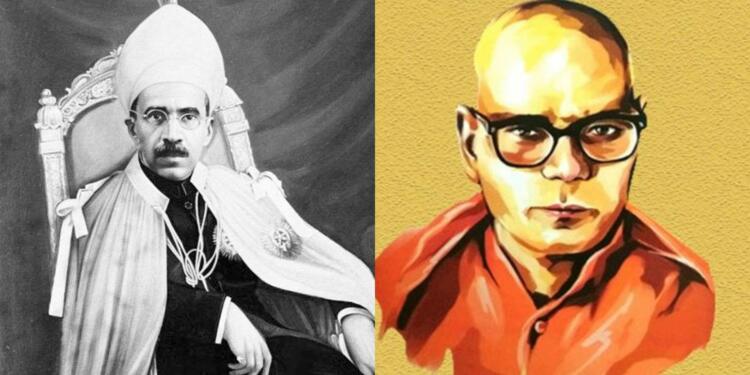Swami Ramanand Teerth versus the Nizam: The princely states in British India enjoyed suzerainty. It means that the internal matters of the states were looked after by the states while the external affairs were looked after by the British. Hyderabad was one such state. But after Independence, Hyderabad was acceded into India through ‘Operation Polo’. We know about the operation and the story behind it but there are few contributions that deserve bigger audience.
Hyderabad and its freedom struggle
Mir Osman Khan, the last Nizam wanted Hyderabad to be independent constitutional monarchy and for that he approached the British government. But the last viceroy, Mountbatten denied that demand. Being a landlocked state surrounded by Indian states, when the Nizam approached the Portuguese to attain a sea trade route through Goa, it became a more serious issue for the integrity and sovereignty of India. As the last resort, Operation Polo was launched and Hyderabad was integrated into India.
India favoured integration because majority of the citizens of Hyderabad wanted to be a part of India. Hindus in Hyderabad were exploited by the state machinery. Hyderabad’s population consisted of 85% Hindus out of which only 10% had government jobs. The subjugation of Hindus created a natural revolt against the state of Hyderabad. As we know. the fight from outside the state let us catch up to the internal fight against the Nizam that reinforced Delhi’s mindset of liberating Hyderabad.
Swami Ramanand Teerth unified the struggle
The authoritarian governance of the Nizam created unrest among the youth which led to armed struggle, gradually transforming into peoples’ movement. In order to fight the atrocities of the Nizam, the Andhra Mahasabha, Maharashtra Mahasabha and Karnataka Mahasabha were formed in their respective regions as the state of Hyderabad encompassed some parts of Andhra, Karnataka and Maharashtra.
Swami Ramanand Teerth, the teacher turned politician, took up the task to give direction to the cause. He focused on gathering people to create a more impactful movement. It was his opinion that without a political platform, the liberation of Hyderabad would be just a dream and that the political platform should be free from all kind of discrimination like caste and religion.
He insisted to form a “Hyderabad State Congress”. With the members of the Maharashtra Mahasabha, Karnataka Mahasabha and Andhra Mahasabha, it proved to be a more solidified platform for freedom struggle.
While Gandhi-Nehru did not want to fight against the Nizam, Sardar Patel favoured the liberation struggle. In Haripura Congress meeting, Swami Ramanand Teerth proposed the formation of Hyderabad State Congress under the leadership of Subhash Chandra Bose. But unfortunately, the Nizam banned its formation. In opposition Swami Ramanand started Satyagraha and non-cooperation movement for which he was arrested. Interestingly, his satyagraha started on 24th of October 1938 was the first formal protest against the Nizam in the whole of history.
Also Read: Petty Politics versus Respect for constitutional posts
Channelised the fight for independence
Later, when the Quit India Movement ended, the ban on formation of Hyderabad State Congress was also lifted. The forerunner of Hyderabad liberation movement, Swami Ramanand Teerth became its first president in 1947 and his first call was to start a final struggle for freedom. The HSC started various Non-Violence and Satyagraha Movements.
Swami opined that the “final war for the Independence of Bharat will be held in the land of Hyderabad.” HSC campaigned to join the Hyderabad state with Bharat and consequently August 7,1947 was declared to be “Join Indian Union” day. This led to protests and flag hoisting all over the state. The Nizam being irritated ordered arrest and imprisonment of Swami Ramanand. He remained imprisoned for 111 days.
He always knew that Delhi will only take actions if there was a call by the people. That is why, he mobilised and channelised the voice of people of Hyderabad against the Nizam, Kasim Rizvi, president of MIM and Razakars.
Due to the atrocities of Razakars under the patronage of the Nizam, there was a war like situations in Hyderabad. Taking account of the situation, Sardar Vallabh Bhai Patel launched the “police action”. The Nizam surrendered and the transitional government released Swami Ramanand Teerth.
After the liberation of Hyderabad, Swami Ramanand Teerth requested the Indian government to counter the influence of communists in the state. Further, he worked for the upliftment of poor and unprivileged till his last breath on January 22, 1972.
Support TFI:
Support us to strengthen the ‘Right’ ideology of cultural nationalism by purchasing the best quality garments from TFI-STORE.COM
































